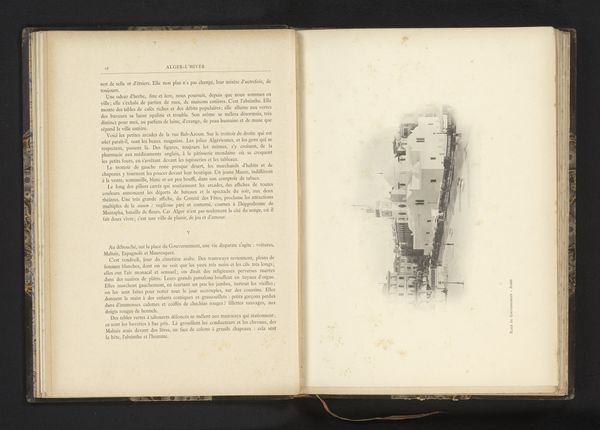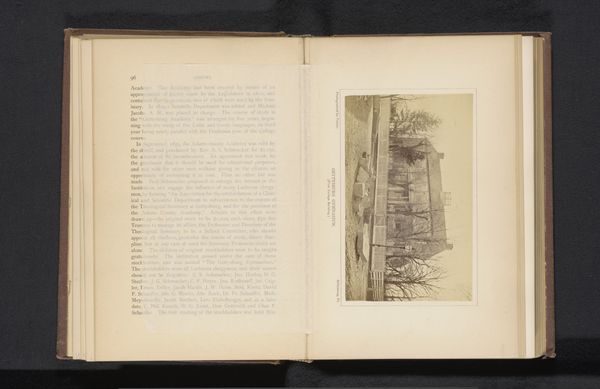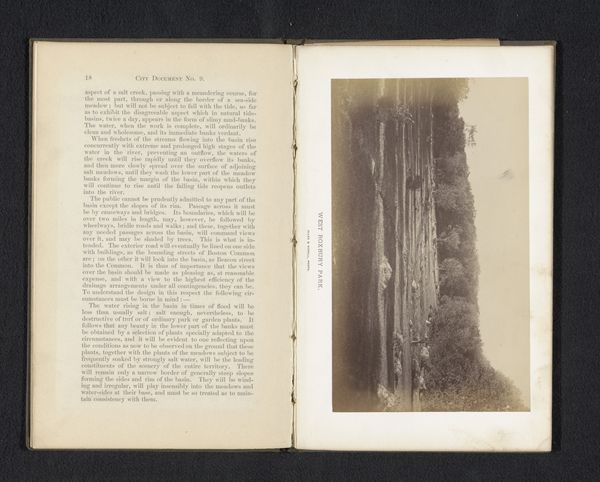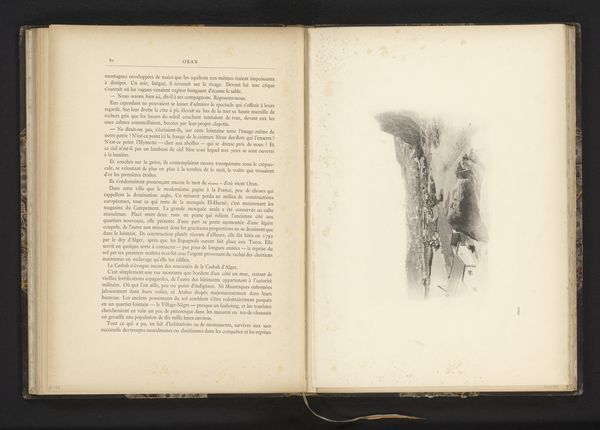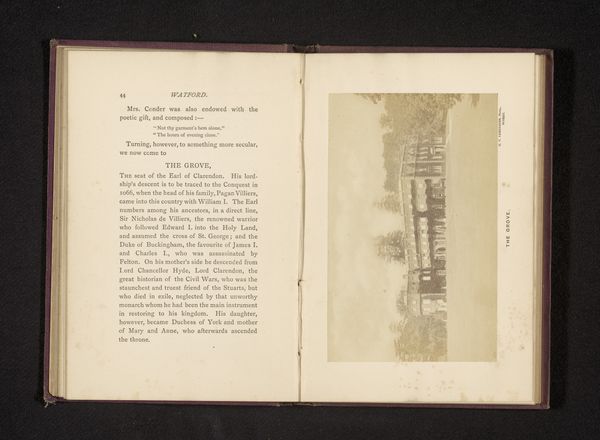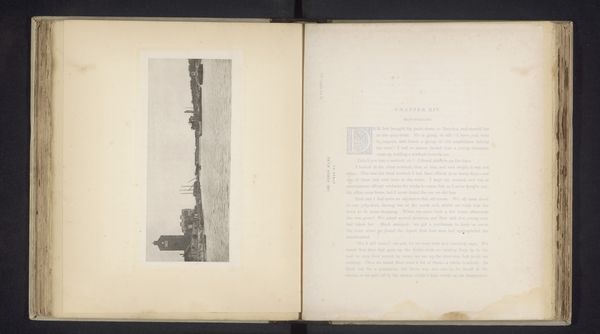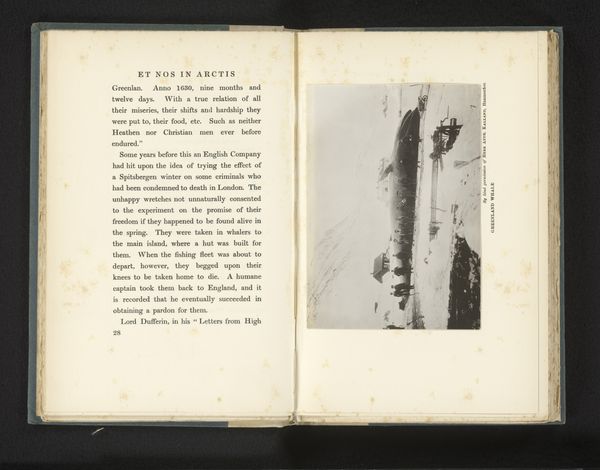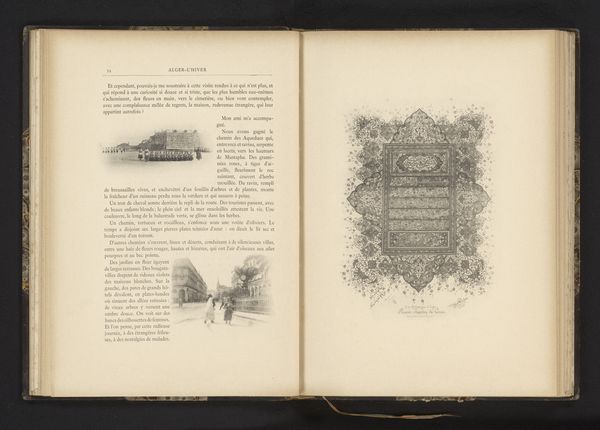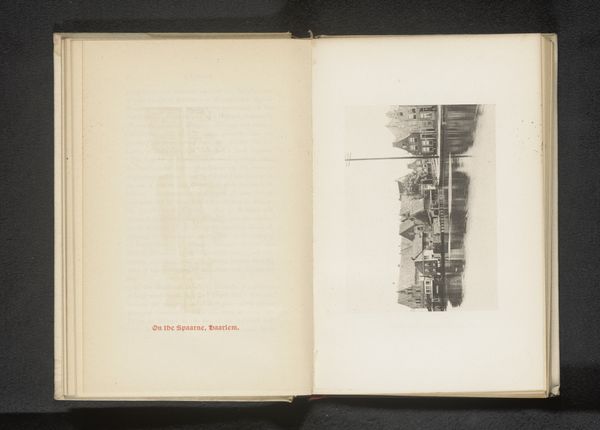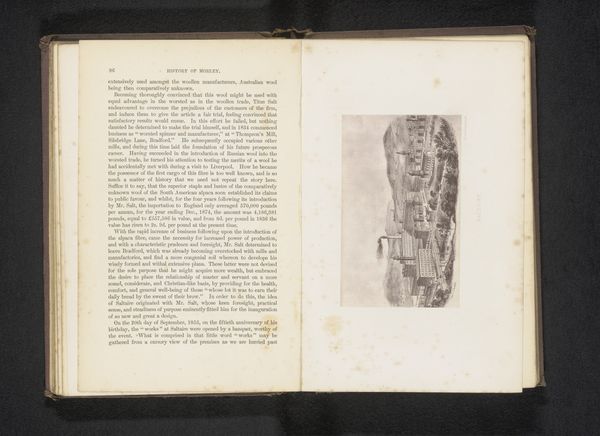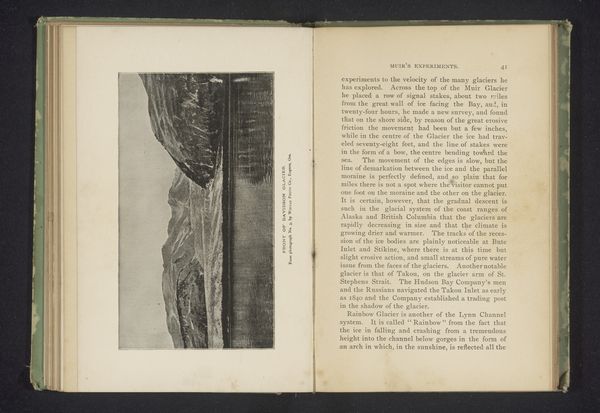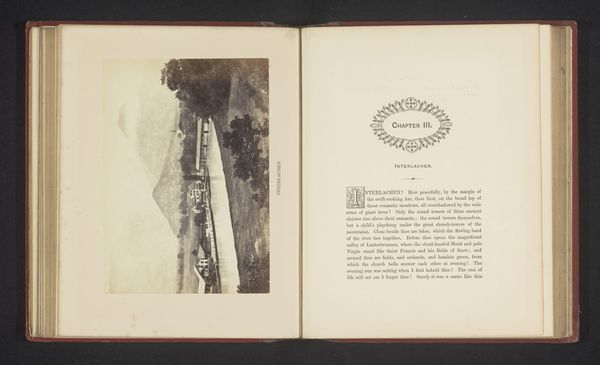
Gezicht op een straat langs de haven van Algiers, Algerije before 1893
0:00
0:00
julesgervaiscourtellemont
Rijksmuseum
Dimensions: height 63 mm, width 86 mm
Copyright: Rijks Museum: Open Domain
Curator: Here at the Rijksmuseum, we have "View of a Street Along the Port of Algiers, Algeria" by Jules Gervais-Courtellemont, dating from before 1893. This piece appears to be an image from a book using a variety of mediums—drawing, print, photography and what appears to be colored pencil and ink. Editor: It's evocative! The scene depicted holds a certain stillness, almost as if frozen in time. The use of mixed media creates a fragmented, almost dreamlike quality. It speaks to the way we try to preserve or interpret memory, which is always changing and incomplete. Curator: Indeed. The inclusion of both photography and hand-drawn elements feels very significant. Photography, thought to be objective and “true” at the time, is combined with artistic interpretations. It reminds us to be aware of inherent biases and intended manipulation. Editor: Precisely! Consider Algeria's status as a French colony during that era. There’s always that inherent power dynamic. This “view” that Courtellemont presents of Algiers, in effect, then represents a deliberately European construction or, frankly, appropriation of it. It makes me question who the intended audience was. And who benefits from that viewpoint? Curator: That’s an important point. The blending of artistic styles could represent a bridge—or a clash—between cultures, which makes me curious how a contemporary Algerian would react to it now. I notice several figures in the street scene who could be read as ethnographic types, which was also a feature in other images of colonized people, so there's the tension between scientific accuracy and Orientalist stereotypes. Editor: The fact that this streetscape appears within the pages of a book further suggests the dissemination and consumption of this colonial narrative. How many people internalized this image as representative of Algeria? And even unconsciously shaped their own biases through it? That kind of power in imagery can never be underestimated. Curator: These layered complexities in seemingly simple art pieces make me reflect on what it means to interpret symbols from the past with present-day sensitivity. The power to reflect resides in how a person's history intersects the symbol of another. Editor: It's important work. Hopefully this dialogue has empowered our visitors to engage in critically aware art viewing. There's always so much beneath the surface.
Comments
No comments
Be the first to comment and join the conversation on the ultimate creative platform.
